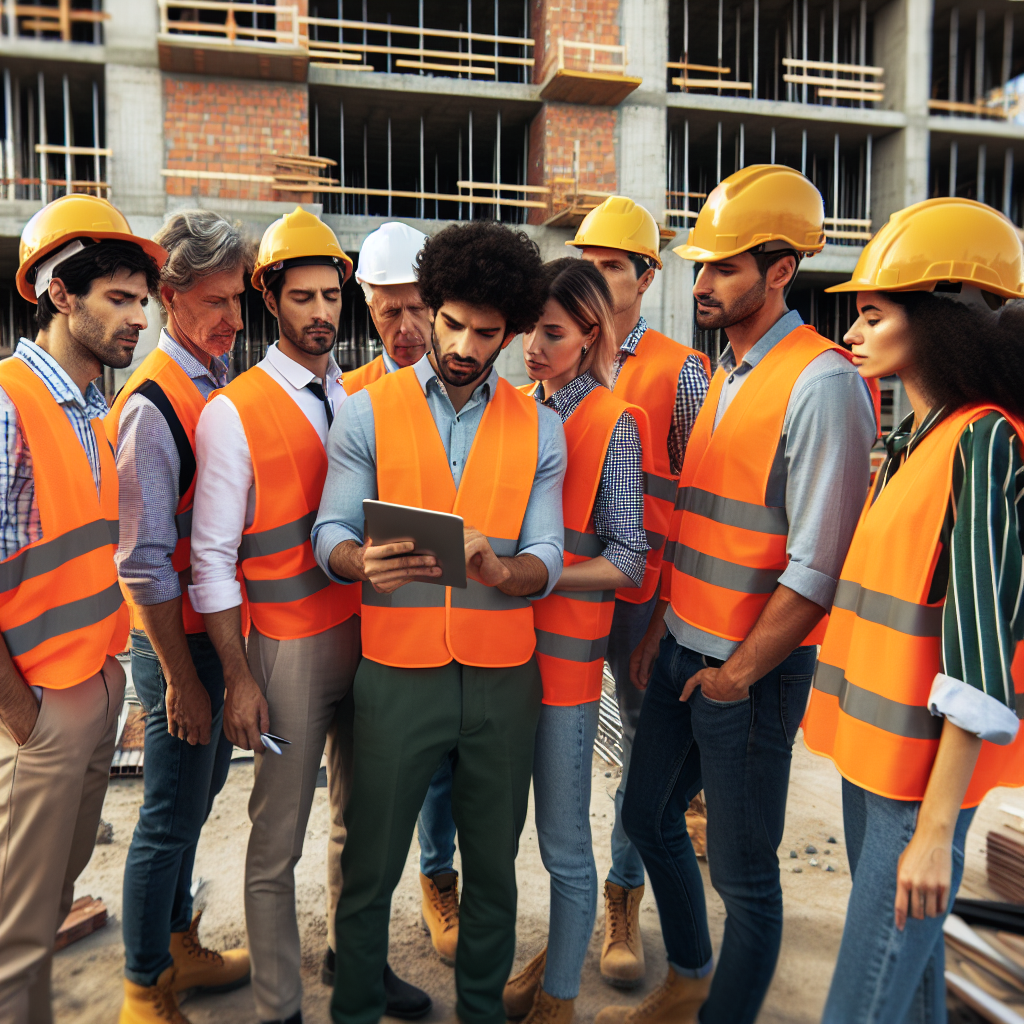How AI and IoT Are Revolutionizing Construction Job Sites
Introduction
The construction industry is undergoing a significant transformation driven by the integration of Artificial Intelligence (AI) and the Internet of Things (IoT). These technologies are enhancing efficiency, safety, and sustainability in construction projects. By leveraging advanced analytics and real-time data, construction firms can improve project outcomes and foster a more productive working environment.
Key Concepts and Benefits
Internet of Things (IoT)
The Internet of Things (IoT) is revolutionizing how construction job sites operate. With the help of IoT devices such as sensors, smart tags, and interconnected cameras, construction managers can monitor progress, manage environmental conditions, and enforce safety protocols in real-time.
- Real-Time Data Collection: Real-time data gathering allows for instant analysis and reporting, ensuring compliance with safety regulations and improving oversight of job site activities.
- Predictive Maintenance: IoT technology can predict equipment maintenance needs, thus minimizing equipment failures and costly downtime, a crucial aspect of construction financial management tools.
- Safety Enhancement: Wearable IoT devices monitor worker conditions and hazards, ensuring the safety and well-being of all personnel on-site.
Artificial Intelligence (AI)
Artificial Intelligence (AI) plays a vital role in enhancing productivity and project outcomes. Its ability to analyze vast amounts of data enables construction firms to streamline their operations significantly.
- Design Optimization: AI can analyze data sets to identify the best designs and materials, enhancing energy efficiency and structural integrity.
- Project Management: AI automates core project management tasks such as scheduling, budgeting, and resource allocation, allowing project managers to focus on strategic decisions.
- Risk Management: Through sophisticated analysis of historical data and current conditions, AI can assess risks and identify strategies to mitigate them, preventing accidents and shifts in project timelines.
Use Cases
Smart Buildings
Integrating IoT sensors with AI algorithms enables the creation of smart buildings. These structures can optimize performance, recommend when maintenance is due, and enhance occupant comfort through data-driven management.
Automated Construction Processes
With the use of AI-powered robots and machinery, construction tasks like bricklaying, welding, and painting can be performed with precision, reducing labor costs and improving safety on job sites.
Predictive Safety Analytics
AI systems can analyze safety patterns and historical data to predict high-risk situations before they escalate into incidents, significantly enhancing workplace safety across job sites.
Generative Design Optimization
AI’s generative design capabilities explore myriad building variants, optimizing construction projects for crucial factors such as energy efficiency, structural resilience, and cost-effectiveness.
Intelligent Project Scheduling
Machine learning models afford construction managers the ability to develop optimized project schedules by analyzing past data, resource availability, and on-site progress, effectively reducing delays.
Emerging Innovations
Digital Twins
The idea of Digital Twins—virtual replicas of physical structures—utilizes real-time data to anticipate how buildings will perform over time, enhancing planning and maintenance.
Autonomous Equipment Operation
AI-driven construction machinery can operate with minimal human intervention, significantly boosting productivity while ensuring safety through automated oversight.
SiteCloud Analytics
Combining AI with IoT data collection fosters profound analytics capabilities on-site, providing construction firms with the insights necessary to make informed, data-driven decisions.
Statistics and Market Trends
The impact of AI in construction is on the rise. In 2022, the AI in construction market was evaluated at over $2.5 billion and is anticipated to grow at a compound annual growth rate of 20% from 2023 to 2032, reaching up to $11.85 billion by 2029. Notably, 74% of firms plan on adopting innovative technologies to enhance productivity and competitiveness.
Best Practices
- Integration into Workflows: Embed AI tools directly in construction workflows to enhance decision-making capabilities and reduce waste.
- Data-Driven Decision Making: Leverage data from AI and IoT to inform schedules, resources, and risk management strategies.
- Safety Monitoring: Enforce the use of IoT-enabled devices to continuously track the safety of employees and the job site environment.
How Zepth Can Help
With a focus on efficiency and innovative solutions, Zepth integrates AI and IoT technologies to enhance construction management. Our comprehensive tools support:
- Construction Management: Zepth’s solutions provide features like document management, project tracking, and predictive maintenance capabilities, aligning with today’s needs.
- Project Planning and Execution: Leveraging AI algorithms, Zepth enhances project schedules and resource allocation strategies for timely completion.
- Safety and Compliance: With tools like jobsite management, Zepth ensures safety requirements are met efficiently.
For more information on how Zepth can support your construction management needs, visit Zepth’s Construction Management Solutions.
Conclusion
The integration of AI and IoT in construction is revolutionizing the industry by enhancing efficiency, safety, and sustainability. As these technologies continue to evolve, they promise to bring even more innovations and opportunities to the construction sector. By adopting best practices and leveraging advanced tools like Zepth, construction companies can significantly improve project outcomes and contribute to growth in the industry.




